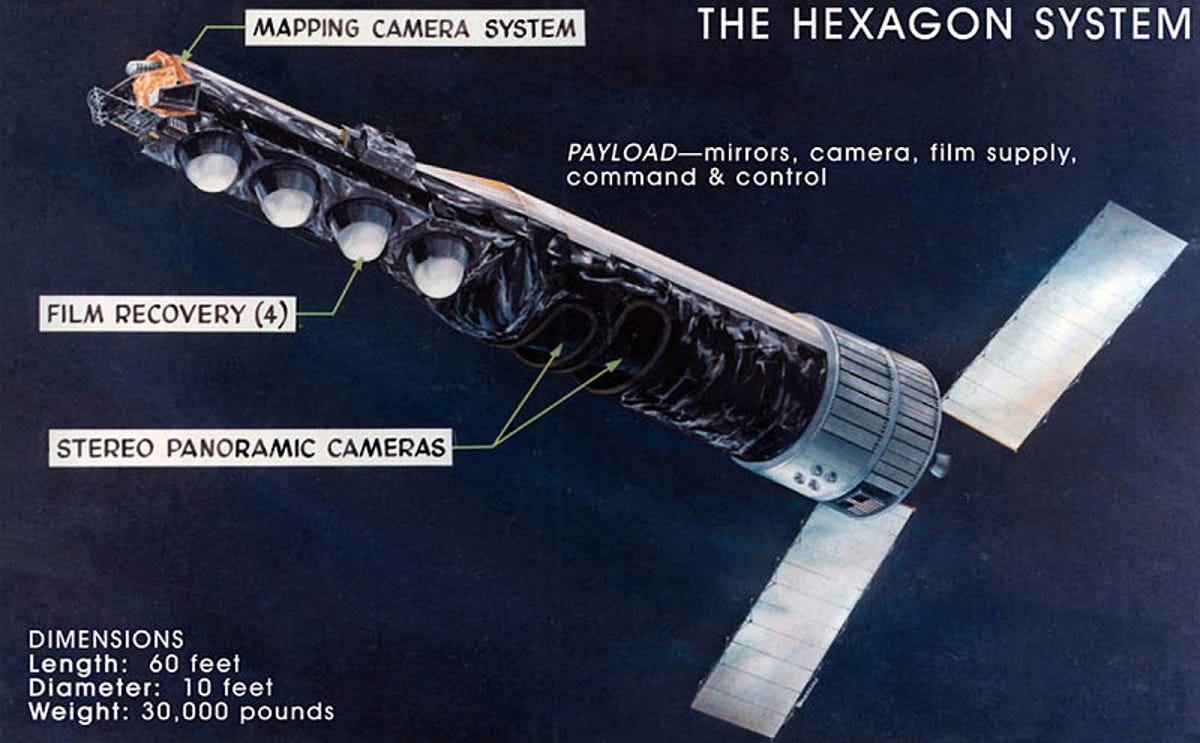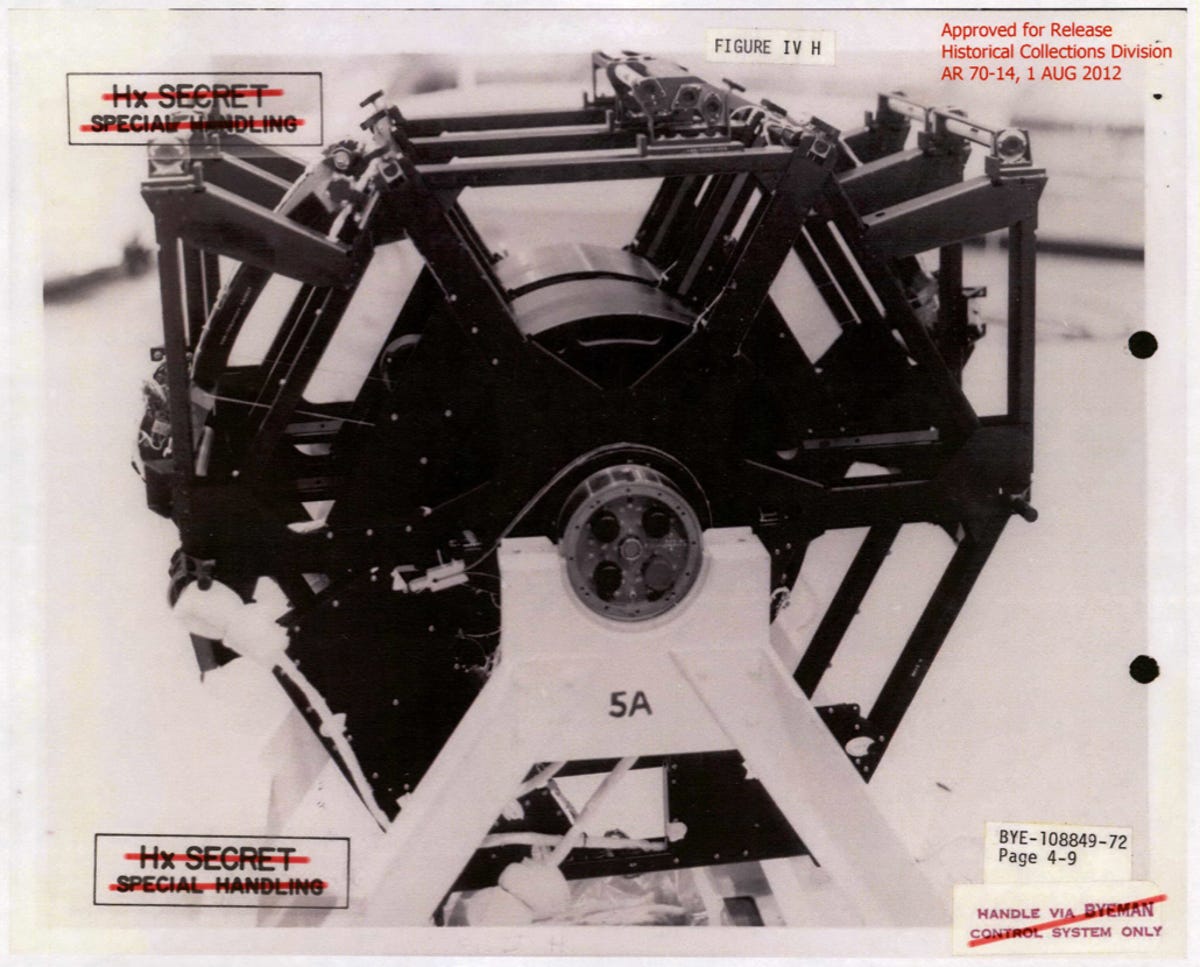Deep dive declassified: 1972 CIA rescue of spy satellite gear (pictures)
Newly declassified secret documents reveal a deep-sea photoreconnaissance recovery mission 40 years ago at 16,400 feet below the Pacific Ocean near Hawaii.

Hexagon satellite system
The film images were sent back to Earth in recoverable return capsules. Entering the Earth's atmosphere, the canisters deployed a parachute and were then snagged by a plane in mid-air and returned to base for processing and analysis.
But in July 1971, the third reentry vehicle from the first Hexagon photo-satellite mission was lost, when the parachute broke, sending the canister into the open sea near Hawaii. The bucket sank on impact to a depth of more than 16,400 feet. This was sensitive info -- photographs of the Soviet Union's submarine bases and missile silos -- and the decision was made to attempt to recover the valuable intelligence data.
This week, the CIA released documents relating to the spy satellite incident and the recovery mission. Here's an illustration of the Hexagon system.
Film rentry vehicle on ocean floor
Piece of the gold film canister
Recovery capsule
Gold film canister
Film stacks from the KH-9 Hexagon
Encoder and Al motor drive electronics
Disintegrating stacks
An intact reentry vehicle for the Hexagon spy satellite

Hexagon reentry vehicle
The capsule encoder
Al motor drive electronics
Trieste II recovery vehicle
Prior to this mission, the Trieste II recovery vehicle had never gone below 10,000 feet underwater and the film was at more than 16,000 feet. It is conveyed in CIA documents that "the decision was made to attempt the deep sea recovery of the RV primarily for the intelligence value of the film record and secondly to establish a capability for deep oceanographic recovery."
Documents chronicling the recovery of the satellite film say "the reliability of the Trieste II was relatively poor. There was a major subsystem failure on each of the three dives."

